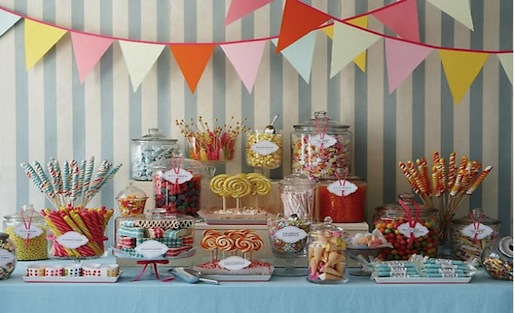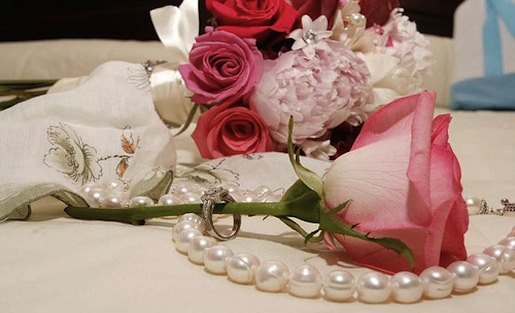I never thought I would be the type of person who pored over wedding magazines. But after I got engaged, I gave into my mother’s desire to descend on the wedding mag section at Barnes & Noble. I figured I could glean intelligence with which to protect myself from the wedding industry. Instead, amid the flowers and cute but oh-so-time-consuming DIY inspirations, I found a surprising amount of useful guidance on the practical matters of wedding planning. What’s more, as a journalist, I realized that planning a wedding has a lot in common with planning a collaborative project — that is, getting teams of people to work together, on an ambitious timeline, on a project that requires their multiple visions and expertise.
A wedding, after all, is a collaboration between a couple, two families, and a host of tailors, chefs, photographers, artists, and organizers. And while the wedding industry depends on convincing brides and grooms that their wedding must be unique like their love, it will allow that the process of planning works pretty much the same way for a $100,000 extravaganza or a modest backyard ceremony. With more than 2 million weddings in the United States each year, industry veterans know how to make these collaborations work smoothly, and the advice they dispense in the pages of magazines like The Knot, Martha Stewart Weddings, and Brides is useful for collaborators in any field, journalism included.
Set the budget first
In the early stages of a journalistic collaboration, it’s fun to dream with a partner about the documents you’ll collect, the moving video you’ll film, or the key character you’ll interview … who happens to live in Hawaii. Like a designer wedding dress or food for 200 of your closest friends, those dreams might cost more than the dreamer wants to admit. On Real Simple Weddings’ planning calendar, “work out your budget” is the second item, ranked only behind “start a wedding folder.” TheKnot.com’s 12-month wedding calendar commands, at the top of the list: “Envision your wedding and draw up a budget.”
Even the wedding industry, which runs on dreams, knows it’s essential to figure out how much funding is available to make those dreams a reality. Just as a couple should assess their own resources and ask their parents early on whether and how much they can contribute, collaborators on any project should be upfront from the beginning about what they can offer. Not everyone’s parents or partners can offer financial support and not every potential partner needs to contribute financially, but while it’s easy to hammer out the details of non-monetary contributions later on, planning for an unaffordable project can lead to broken hearts.
Clarify your vision

Clarifying your vision for the Big Day helps shape the budget, but it’s also a way to guide all the tiny decisions that will be made over time, by different people. If the couple figures out what kind of wedding they want upfront, they’ll have an easier time communicating with potential partners about what they need, and reminding themselves what they set out to accomplish.
In wedding-speak, this sometimes translates into pressure to “choose a theme” and pick a “color palette.” I thought that these ideas were a bit precious when I first came across them: How big of a deal is it, really, if the table settings are hot pink and lime green or coral and khaki? While color palettes may not be important in the overall scheme of things, making clear decisions upfront is essential; that way, every time a smaller decision comes around — these place cards or those? this cake or that one? — the options narrow and the decision becomes manageable.
Deciding from the outset how elaborate a collaboration will be helps everyone involved keep on course and helps check potential sprawl. For example, if a beautiful journalistic bauble comes across the screen — a new storytelling tool, a great angle, a website designer who promises the world — participants can think back to the original, clear vision for the project and judge whether this new element fits in.
Pick partners you like
In the media biz, as in weddings, a good idea often starts with a conversation between two people; making that idea a reality, though, requires many more. Picking the right partners can make your project go smoothly; picking the wrong ones can make every phone call or email a dreadful experience.
When choosing a wedding planner, there’s a list of practical considerations that the pros recommend considering. A planner should be able to provide contact info, proper equipment, dates for deliverables, back-up plans, and cost estimates. She should be available on the key dates and return calls and emails promptly.
Plenty of organized, responsible people can check each one of those boxes. The real deciding factor, according to The Knot, comes down to chemistry: “She has the type of personality you can get along with and seems genuinely excited to work with you.” In other words, if you’re going to be spending a fair bit of time working with a group of people in a stressful situation, make sure they’re people you like and with whom you get along. Sounds obvious, but we all know collaborations that have fallen short of their potential (or just plain fallen flat) because the individuals involved couldn’t work together effectively; taking the time to choose the right cast of characters is worth it.
(Do not) put your chair backs front and center

Although I have warmed to wedding magazines as a genre, I’m still wary of them. While they offer useful advice, they’re also full of traps — exhortations to focus on details entirely peripheral to the reason that a couple began the project of getting married.
My favorite example of this is a one-page spread in this summer’s issue of Martha Stewart Weddings that offers couples “festive ideas” to “put your chair backs front and center.” Silly me — I thought the idea of a wedding was to put the happy couple front and center. Apparently the oversized sequins, lemon leaves, nautical ropes tied in decorative knots, or framed baby photos of the happy couple are the real focus.
While there’s nothing wrong with gussying up the backs of otherwise functional chairs (as long as they remain functional), putting too much emphasis, time and heartache into extraneous details like this can obscure the initial inspiration and fun that set a project in motion. This is the type of work that leads couples and families to wish that the wedding was over already, when they should be looking forward to it.
In this, then, wedding magazines do not offer good counsel but serve as a warning. Keep focused on the heart of your project — the reason you decided to spend all this money, block off too much of your time, and work with new partners. Do not put your chair backs front and center.
Sarah Laskow is a freelance reporter and editor based in New York City. She started her career at the Center for Public Integrity, where she worked on team-based projects and on collaborations with other journalism outlets, and has contributed to The American Prospect, Salon, Politico, Newsweek, and other publications. She edits Smithsonian’s SmartNews blog and, against all odds, is planning a June wedding.
Images courtesy of Flickr users chutes and ladders and Hilton Pensacola Beach Weddings.

